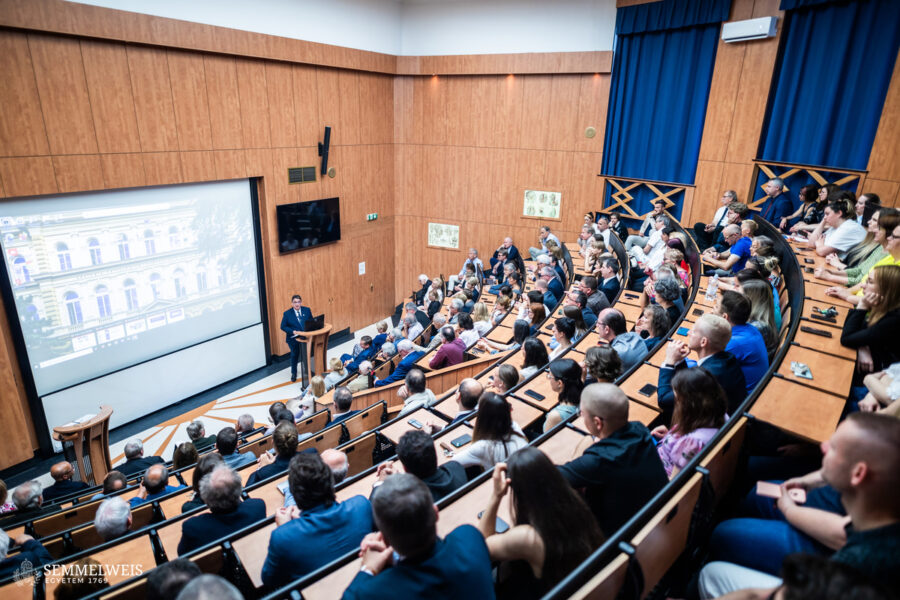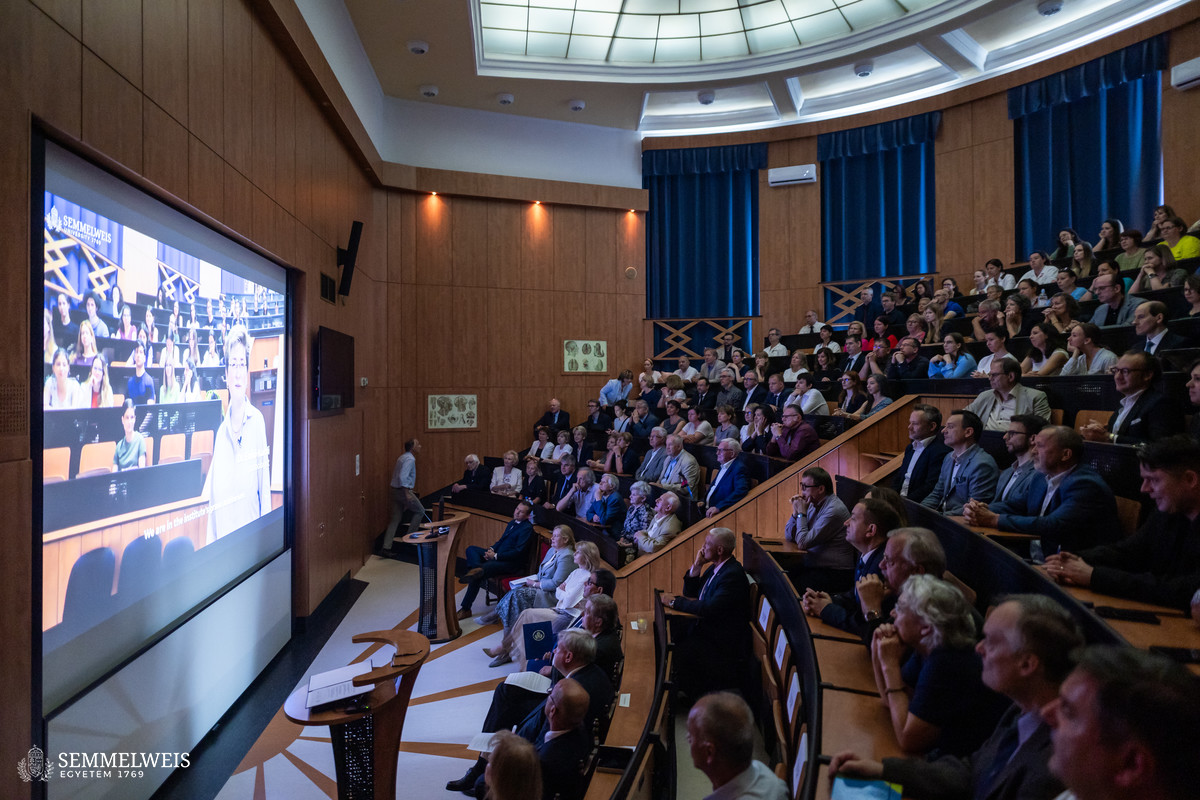The institute celebrated its 180th anniversary with a jubilee academic session.
“This institute was the first institute of pathology not only in Hungary, but in the entire Central European region, and since then it has played a prominent role not only in traditional histology, but also in molecular diagnostics, research and education. Research and education here are of great value to the health sector.” “. Judit Bidlo, Deputy State Secretary responsible for the professional administration of healthcare at the Ministry of the Interior, at the ceremonial scientific meeting organized on the occasion of the 180th anniversary of the founding of the Institute of Pathology and Experimental Cancer Research at Semmelweis University.
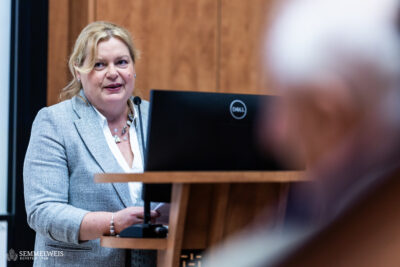
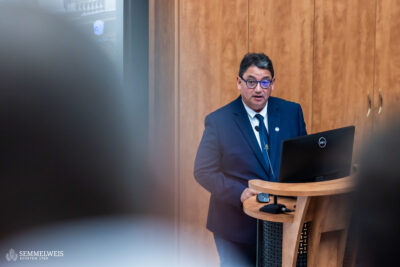
“I hope that the coming years and decades will bring development on a similar scale to pathology, and that they can continue to nurture the burning light of science, keeping in mind the legacy of their great predecessors.” Bella Merkle
Regarding the early years of home pathology, its local development, the history of the institute in the last century, and its most prominent leaders and researchers of European and international fame, Dr. This was stated by András Matolcsi, President of the Foundation, in his welcoming speech. He pointed out that after the turn of the millennium, Dr. After Laszlo Köper was appointed President of the Institute, a new era began in the life of the Institute. At the same time, the building, research and laboratory infrastructure had to be renovated, diagnostic and pathological research activities had to be reorganized, and the institute's income had to be stabilized. An important element of the new concept was that pathology activities were centralized first at the university and then in the region, and later in many cases – such as hematology-oncology, molecular oncology, pulmonology or cardiac genetics – they began to function as national centres.
For this reason, the toolkit had to be updated, and then they started to digitize and automate as many activities as possible. As a result, compared to 2001, the institute has grown to become the largest domestic service provider, with 9,000 biopsies processed at that time, more than 65,000 samples are analyzed today, and digital pathology diagnosis and education are also useful in organizing international cadaver courses. The annual budget, rising to approximately HUF 2.5 billion, made it possible to renovate the institute's building in neo-Renaissance style and create new laboratories, thus creating the most modern new generation gene sequencing laboratory in Central Europe, or the zoological house of the institute, said Dr. Andras Matolcsi, adding that molecular diagnostics currently accounts for two-thirds of the institute's income.
I owe a debt of gratitude to the staff of the Institute, who accept that it is not enough to be good enough, but to be the best, and in addition, by giving extra performance, they constantly contribute to the success of the Institute – added Dr. Andras Matolksi.
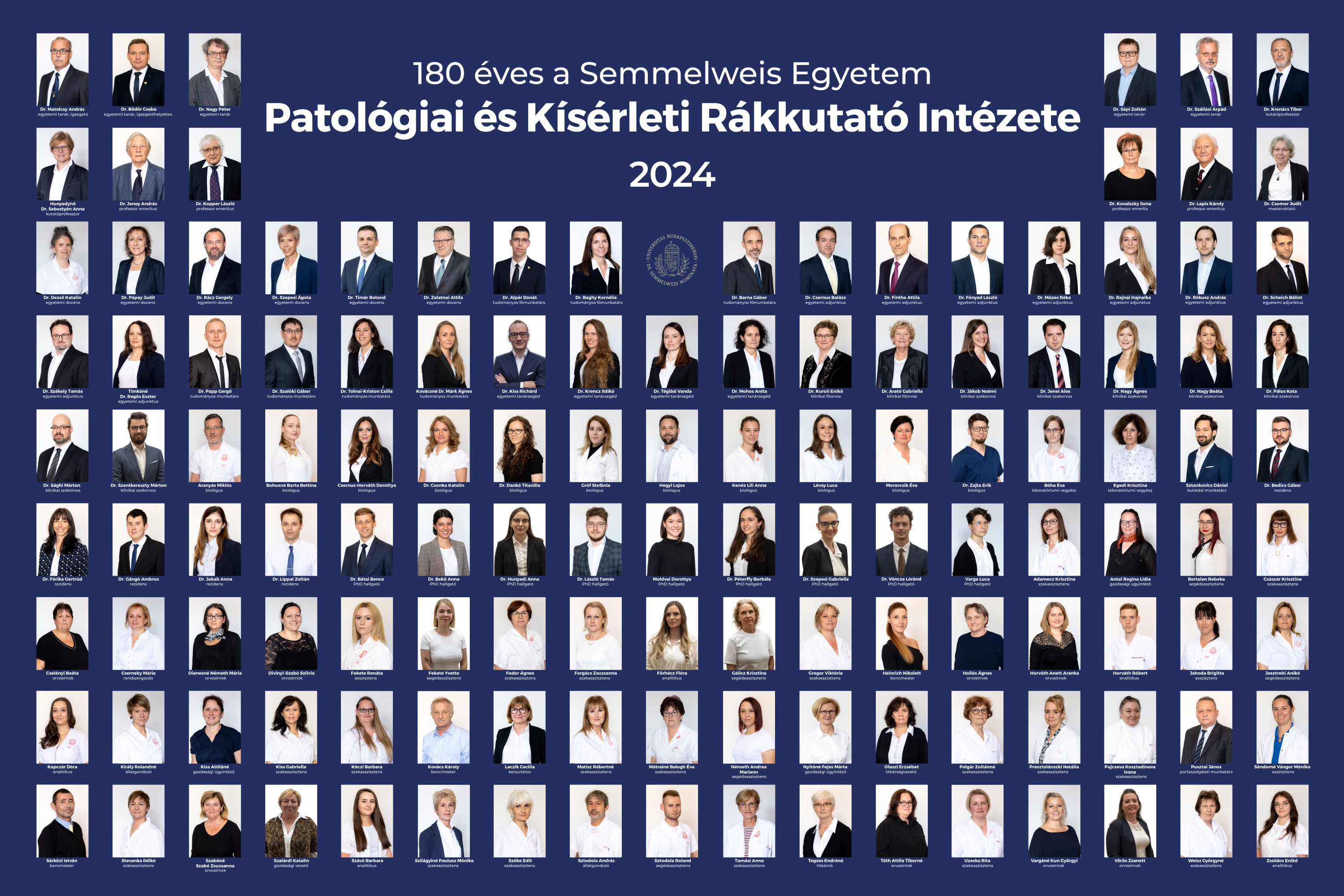
Dr. Mikael Björnstedt, Professor of Pathology at Karolinska University, spoke appreciatively about the details of the 14-year collaboration between their institute and Semmelweis University. In addition to organizational cooperation, joint methodological development, educational exchange programs, and joint courses, as well as clinical research and translation projects, the professor confirmed that Dr. Andras Matolksi has been a guest professor at Karolinska University for many years, and was himself awarded an honorary doctorate by Semmelweis University in 2017. Regarding the future of pathology, he believes that in addition to genomics, the focus should be on transcriptomics and proteomics, and that precision pathology It has a great future, especially through AI-assisted image analysis procedures.
Dr. Csaba Budur, University Professor at the Institute, presented successes in the fields of molecular hematology, molecular oncology and cardiac genetics – including the Institute's transformation into a national center for pediatric leukemia, freely available comprehensive genomic profiling of some oncology diseases using NEAK funding, as well as Introducing cardiac tests that make follow-up of heart transplant patients less painful and leading to endocardial biopsies – and spoke about established diagnostic programs.
He also pointed to a €150,000 industrial collaboration, within which variations that may play a role in the development of specific hereditary heart diseases are being investigated by sequencing the entire genome of 200 patients. Dr. Csaba Budur also presented the latest research projects in molecular genetics and pathology at the institute.
Dr. Anna Sebastian, chief scientific researcher at the Institute, drew attention to the tradition of cancer research here: The Department of Experimental Cancer Research at the Budapest Institute of Pathology was founded exactly 90 years ago, in 1934. He also described the role played by previous distinguished researchers at the Institute in developing research Cancer locally and internationally. Working groups involved in solid tumor and rare cancer disease research can draw on a very broad, half-century-old knowledge base in basic research, state-of-the-art technology and about 250 human cancer cell lines, also as live cell, 3D cell modeling options available for experiments. He also explained the most important research programs of the work teams.
In the second half of the festive session, participants were able to listen to lectures on the details of curriculum reform related to pathology education, the operation of the National Center for Hematology, and diagnostic and research activities for flow cytometry, in addition to the most important research and diagnostic activities. Milestones related to the complete digitalization of the organization, and they can also gain insight into digital daily life.
During the meeting, a short film was shown about the work of the Institute on the occasion of the jubilee year.
At the end of the celebratory session, Dr. spoke. Andras Matolksi, Director of the Institute, and Dr. Deputy Director Csaba Budur laid a wreath on the bust of the institute's founder, Lajos Arani.
Melinda Catalin Kiss
Photo: Balint Barta – Semmelweis University
The article was published by the Communications Directorate of Semmelweis University.








































